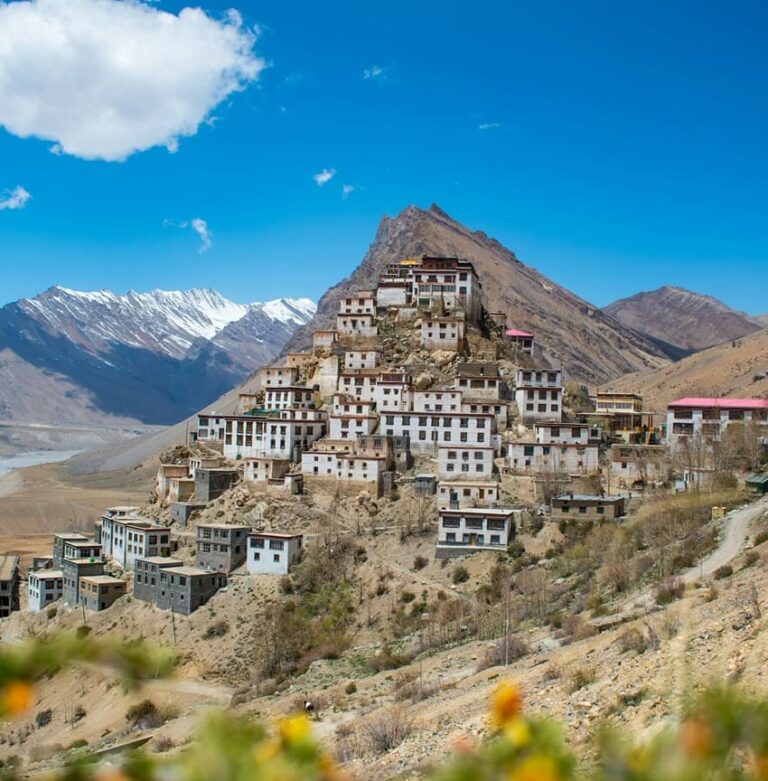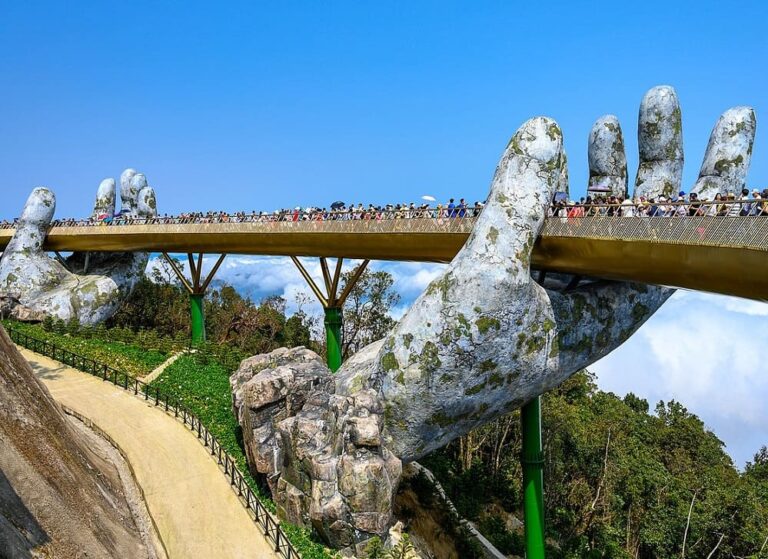15 Most Famous Rivers in the World
Last Updated on 28th September 2025 by admin
Rivers are one of the most captivating marvels of nature, which have been shaping our landscape, culture, and history thousands of years. There are millions of rivers on our planet, yet there are major rivers that are so significant to both this planet and the people who reside along their banks.
In this article, we will have a closer look at 15 of the most famous rivers in the world and each of them has got its own story, beauty, and importance of forming the area where it is located.
1) The Nile River

The Nile River is one of the most famous rivers in the world, stretching approximately 4,132 miles, is the longest river in the world. It passes through eleven countries in northeastern Africa, Egypt, Sudan, and Ethiopia. The Nile has a great historical and cultural value especially to ancient Egypt.
The great pyramids and the valley of the kings are some of the iconic landmarks within the Nile that depict the rich history of the ancient Egyptian civilization. The Nile is a very useful resource to the region today as it supplies water to irrigate the land, offer transport and hydroelectric power generation.
The Nile helps to sustain diverse ecosystems and gives a home to a wide range of plant and animal species. The river has been a source of life to the people living along its shores as it provides drinking, agricultural water and fishing. Nile also has potential tourism areas, visitors can have the opportunity of enjoying the beauty of the river by taking Nile River cruises where they can also see ancient sites.
2) The Amazon River
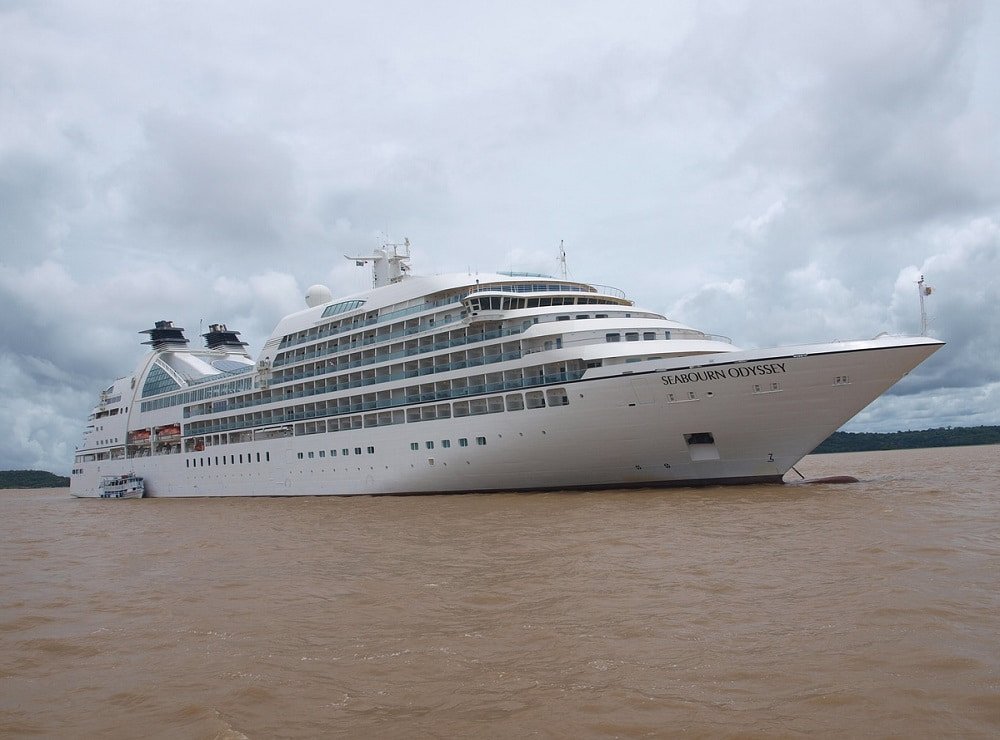
Amazon River is one of the largest natural wonders in the world. It measures nearly 4,000 miles along the south American continent and is known to be the largest river in the world in terms of the discharge volume. It runs through the center of the continent and its vast basin supports the amazing Amazon Rainforest, which is also referred to as the lungs of the Earth because of its importance in controlling the climate of our planet.
The Amazon River is truly spectacular due to its amazing biodiversity. It sustains one of the most rich ecosystems on the earth, where thousands of varieties of plants and animals are found nowhere in the world. Jaguars stalking the jungle floor, pink river dolphins gliding its waters, toucans cheering up the tree tops, the Amazon is filled with life, color, sound and motion.
It is also a source of life to millions of people, particularly the indigenous communities that have settled in its banks over centuries. The river is a source of food, water, and means of transportation to these communities and their traditions and day-to-day lives revolve around it. The Amazon River is also a key trade route linking remote communities and the local economies.
3) The Yangtze River

The Yangtze River (or Chang Jiang) is the longest river in Asia and the third-longest in the world, which flows approximately 3,915 miles through China. It originated in the Tibetan Plateau and flows to East China Sea since thousands of years it had an impact on the history, culture and development of China. The Yangtze has long been used as a significant route of transportation, connecting areas, promoting trade and serving agriculture in the fertile plains.
The river has been a witness to the ancient Chinese civilization with great cities and dynasties evolving through its banks. The Three Gorges is one of its most scenic areas that attract a lot of fame due to its dramatic landscapes of misty cliffs and winding waters. One of the largest hydroelectric projects in the world is the “Three Gorges Dam”, which has brought clean energy to the world but has impacted the environment and people living on its banks.
The Yangtze River is a biodiversity center where some of the rare species are found such as the Chinese river dolphin (Baiji) and the Yangtze sturgeon. The conservation programs are ongoing in order to preserve these threatened animals and to bring the ecological balance. The Yangtze is still the pride of China, its power, its beauty, and its timeless relationship between the human and nature.
4) The Mississippi River

Mississippi River is one of the most iconic and important rivers in the United States, which is approximately 2,320 miles long. The river passes through the northern parts of Minnesota to the Gulf of Mexico. The Mississippi has long been an important transport and trade route, linking the northern and southern parts of the nation. It was a busy waterway in the steamboat era, which stimulated commerce and development.
The large floodplains of the river have formed some of the richest agricultural land in the U.S. where cotton, corn and soybeans thrive. The Mississippi has also pervaded American culture, as a source of songs, stories, and art, much more than its economic value. It became popular with literary icon Mark Twain, who wrote his fictional book “Adventures of Huckleberry Finn”, which represented freedom and the American South.
The Mississippi River also offers a rich ecosystem that is full of wildlife such as migratory birds, fish and reptiles. This is a great river, which is still being conserved to save its beauty and maintain its ecological significance to the coming generations.
5) The Danube River

Danube River is the second longest river in Europe and it passes through ten countries that lie in Central and Eastern Europe. It is 1,770 miles long and crosses through breathtaking scenery, ancient cities, and cultures. The Danube has been a route of trade connecting peoples for centuries, bringing goods, traditions and ideas together. Magnificent cities such as Vienna, Budapest and Belgrade, with a mixture of history, architecture and cultural delight, stand along its banks.
The natural beauty of this river is so beautiful. It passes through stunning landscapes including Danube Bend, Hungary and Iron Gates Gorge, Serbia, Romania. The Danube is a perfect harmony of nature and culture situated in the midst of a green forest, hills with vineyards, and beautiful villages. The river also supports a rich ecosystem which is the home to millions of plant and animal species.
It houses the old and threatened sturgeon, as well as numerous birds and aquatic wildlife. Conservation efforts continue to conserve these delicate environments and keep the river healthy ecologically. A Danube River cruise is the most memorable travel experience in Europe as one gets to enjoy beautiful castles, fortresses, and quaint towns bordering the river and enjoying the soothing beauty of this legendary river.
6) The Ganges River

Ganges River is one of the most renowned rivers in India and is also known to be one of the most spiritual rivers in the world. It is about 1,569 miles and passes through India and Bangladesh and has significant cultural, religious and ecological significance.
The Ganges is a holy river to millions of Hindus, a living goddess called Ganga who is said to bring purity and spiritual release. Indian traditions and rituals revolve around the river. Millions of devoted people come to its bank every year to take a bath in its sacred waters, to perform rituals, and to receive blessings. It has large pilgrimages places such as Varanasi and Haridwar where life and spirituality merge along the banks of this river.
In addition to being religiously important, the Ganges supports a huge ecology of species of plants and animals. The river is the home of the rare Ganges river dolphin, turtles and a host of various migratory birds.
7) The Mekong River

The Mekong River is one of the longest and most significant rivers in Southeast Asia, which measures around 2,703 miles and runs through 6 countries: China, Myanmar, Thailand, Laos, Cambodia, and Vietnam. It is popularly referred to as the Mother of Water as it is very crucial in the development of the culture, economy, and ecology of the region.
The Mekong has been a lifeline to millions of people over centuries as it was a major transportation route and it provided sustenance to trading, farming and fishing communities along its banks. Mekong River basin is exceptionally diverse in biodiversity with myriad species of both flora and fauna. These include the critically endangered Mekong giant catfish and Irrawaddy dolphin, as well as a large number of migratory birds and fish.
Nonetheless, there is increasing pressure on the river due to development and dam projects which impact the river natural flow, sediment transport, and fish migration. To protect the ecosystems and millions of people who rely on its waters, it is necessary to preserve the Mekong.
8) The Volga River

Volga River that passes through Russia is the longest river in Europe with a length of approximately 2,294 miles. It has been a lifeline since centuries, uniting cities, towns, and regions, being one of the main routes of transportation and trade. Since ancient settlements, medieval trading centers and modern industrial hubs have emerged, the river is at the heart of Russian history and economy.
The Volga is also famous because of its natural beauty in addition to its practical importants. It passes through forests, meadows and wetlands, and supports the habitat of various plants and animals. It has greatly penetrated the Russian culture and folklore and is the subject of many different works of literature, music and art due to the scenic landscapes around the river.
There is a campaign today to save the Volga River against pollution and environmental danger. Conserving its ecosystems means that the river can be used to keep communities alive and maintain wildlife, as well as serve as a heritage to the future generations about Russia
9) The Rhine River

The Rhine River is a river of great history, culture and the beauty of nature that flows through a number of countries in the Western Europe. It is approximately 764 miles long and it has significantly contributed to the economic and heritage development of the region. The Rhine has been a major trade route since ancient times, linking such nations as Switzerland, Germany, France and the Netherlands.
It made it possible to transport goods and people, which led to the development of cities and trading networks. The river is also known to have its vineyards, where some of the most famous wines in Europe are produced along picturesque banks of the river. Other than trade, the Rhine is famous by its magnificent scenery. One of the most beautiful scenes in Europe is the Rhine Gorge with its steep cliffs and medieval castles.
It is so beautiful that it has inspired so many artists, writers and composers of all times. Various ecosystems are also supported by the river, which is a habitat to fish, water birds, and other wildlife. The Rhine has been conserved to enable its ecological and cultural riches to live through the generations.
10) The Thames River

The Thames River is one of the most famous rivers in England, which passes through the center of London and the surrounding areas. It is the longest river in England, stretching about 215 miles and has played an important role in the history, culture, and economy of the country. This river flows through the Tower Bridge, which is one of the famous bridges in the world, and other historical sites, such as the tower of London and the Houses of parliament.
The Thames is a crucial route of trade since ancient times which has seen London develop into a busy commercial center and the establishment of England as a maritime nation. Other than trade, the river is also a major recreational and cultural tourism site, providing riverside walks, boat trips, and festivals. Along its banks lie London’s popular tourist attractions, including famous parks, museums, iconic landmarks and riverside pubs.
Thames also sustains a wide range of ecosystem, which is home to birds, fish, and other aquatic organisms. Continued conservation and enhancement of water quality and habitat restoration are preserving this historic and natural beauty so that future generations may enjoy it.
11) The Colorado River
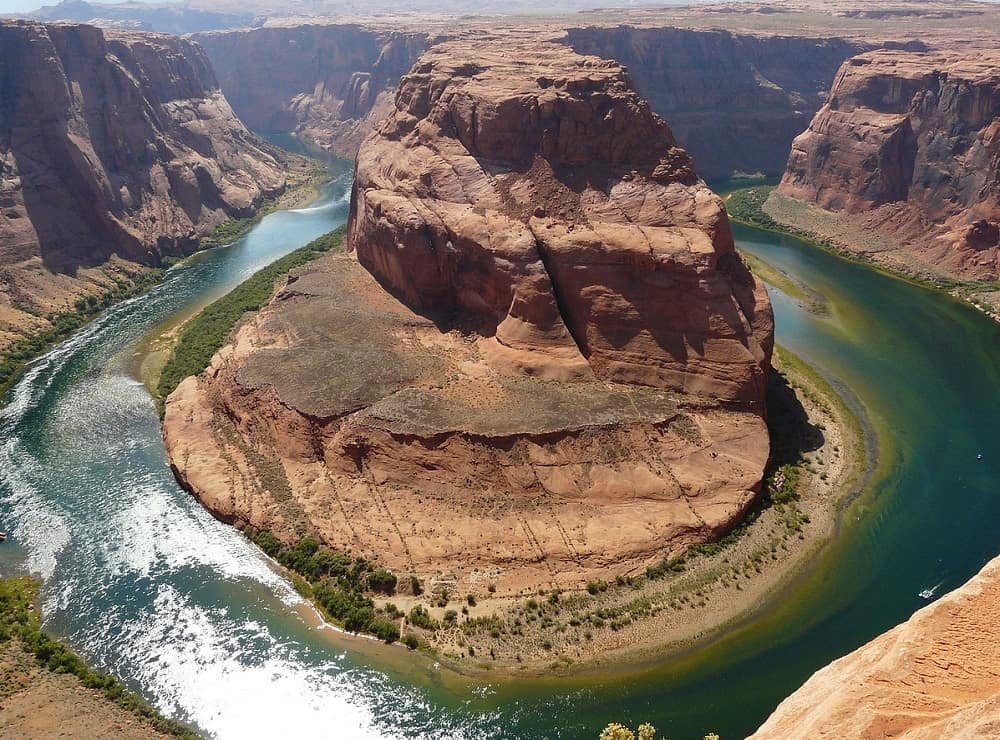
Colorado River running through the western part of the United States is a mythical river in terms of its scenic beauty and importance in the region. It is an excellent tourist destination in the U.S and its length of 1,450 miles cuts through some of the most beautiful natural wonders such as the world-famous Grand Canyon. Its beautiful canyons, cliffs, and views of the desert attract tourists all over the world.
The Colorado River is a source of natural beauty as well as a significant source of water and energy. It supplies water to millions of farmlands and sustains the lives of many communities. The flow of the river is also utilized as a source of hydroelectric power which provides energy to the surrounding region.
However, the Colorado River faces serious challenges. Climate change and growing water demand have strained its resources resulting in shortages of water in agriculture, industries, and households. The river needs conservation and collaboration between states, Native American tribes, and other stakeholders to preserve the river, restore ecosystems, and make them sustainable to the generations to come.
12) The Indus River
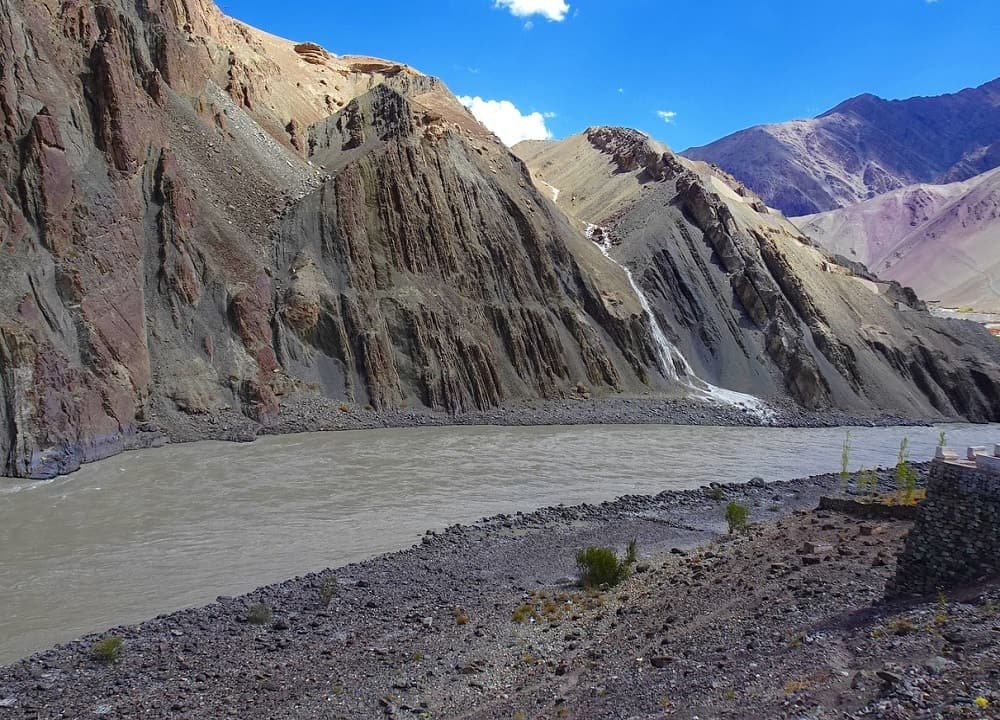
Indus River is one of the rivers in the world that is considered to have a lot of historical and cultural significance. Spanning 2,000 miles, it passes India, Pakistan, and China today, and supplies water and nourishment to millions of residents. The river is known as the birthplace of the Indus Valley Civilization that existed more than 5,000 years ago. The ancient civilization built their own civilized cities, properly designed streets, and fertile agricultural lands which are supported by the river.
The archaeological sites such as Mohenjo-daro present the vital importance of the Indus River in human history and its role in the development of the first cities. Even nowadays, the Indus remains a source of life to millions of people, watering its fields and crops as well as communities. It also helps in hydro electricity production which is used to serve the energy requirements of the region.
However, a population increase, industrialization, and climate changes are increasing issues that have endangered the supply of water and ecosystems in the river. The Indus River requires sustainable management and conservation to save it to the generations of the future and keep in support of the people and wildlife who rely on it.
13) The Zambezi River
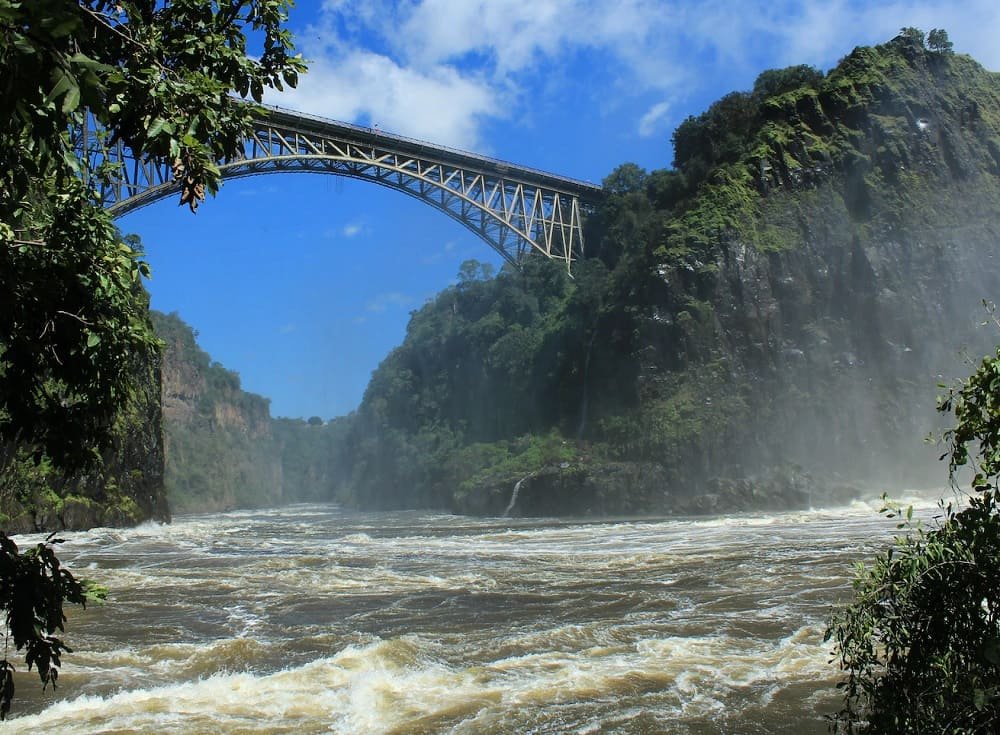
The Zambezi River is one of the most impressive and famous rivers in the region that passes through southern Africa. It covers a distance of approximately 1,599 miles and traverses through Zambia, Angola, Namibia, Botswana, Zimbabwe, and Mozambique and reaches the Indian Ocean. The river also hosts Victoria Falls, the largest and most beautiful waterfalls in the world.
The falls also known as “The Smoke that Thunders” amazes the visitors with the powerful cascade and the mist and are also a UNESCO World Heritage site. Victoria Falls brings out the wildness of the river and its beauty. The Zambezi is also an important source of livelihood to local people besides the scenic value.
Its waters are able to sustain agriculture, livelihoods, and feed fertile floodplains with varied ecosystems and wildlife. The river is also a source of thrilling adventure activities such as white-water rafting, canoe safaris and fishing. Its rich fish species attracts many fishers especially the renowned tiger fish. The Zambezi River is an amazing fusion of natural beauty and culture together with adventure.
14) The Niger River

The Niger River is one of the most prominent and significant rivers in the region, which flows through West Africa. It spans a distance of 2,600 miles cutting across Guinea, Mali, Niger, Benin and Nigeria, defines the landscape, culture, and livelihood of millions of individuals.
The river was used as a source of trade, transportation and cultural exchange and the empires of Ghana, Mali and Songhai flourished along its banks. These civilizations have left their mark in art, architecture as well as traditions that have shaped the region to this day. The river is important in farming and fishing, as well as in supplying water used in irrigation, and supporting local economies.
Its waters are very fishy and nourish the lives of millions of people. The Niger also sustains various ecosystems, where the birds, fish and other wild animals can be found. But problems such as pollution and deforestation are threatening its fragile balance. The environment, the local communities and the heritage of the region require the preservation of the Niger River.
15) The Congo River

The Congo River is the deepest river in the world, which has a maximum depth 220m, passing through Central Africa. It is approximately 2,920 miles long and cuts across the thick rainforests of the Democratic Republic of Congo, Central African Republic, Angola, Tanzania and Zambia. The Congo River is the longest river of Africa and it has the largest volume of discharge on the continent, thus it is a force of nature.
The Congo Basin is its huge watershed, the second-largest rainforest in the world, second only to the Amazon, and is also biodiverse. The Congo River is a lifeline to millions of people. It supplies water, sustains farming and fishing, creates hydro power, and is an important route of transportation, linking isolated communities and trading.
The river supports also diverse wildlife such as gorillas, chimpanzees, and forest elephants among other species and a myriad of plant species. The Congo river and rainforest serve not only as human livelihood source but also to conserve some of the most amazing ecosystems on earth.
Overall, all these 15 famous rivers are an excellent demonstration of the natural marvels and diversity of our earth. Whether it is the mighty Amazon River or the ancient Nile and the magnificent Zambezi, every river has a tale of a cultural heritage, ecological richness and economic significance. This is why we should continue to appreciate, care about and conserve these amazing rivers not just because they are beautiful and they have a history but because they play a vital role in life and connect people living in the world.


